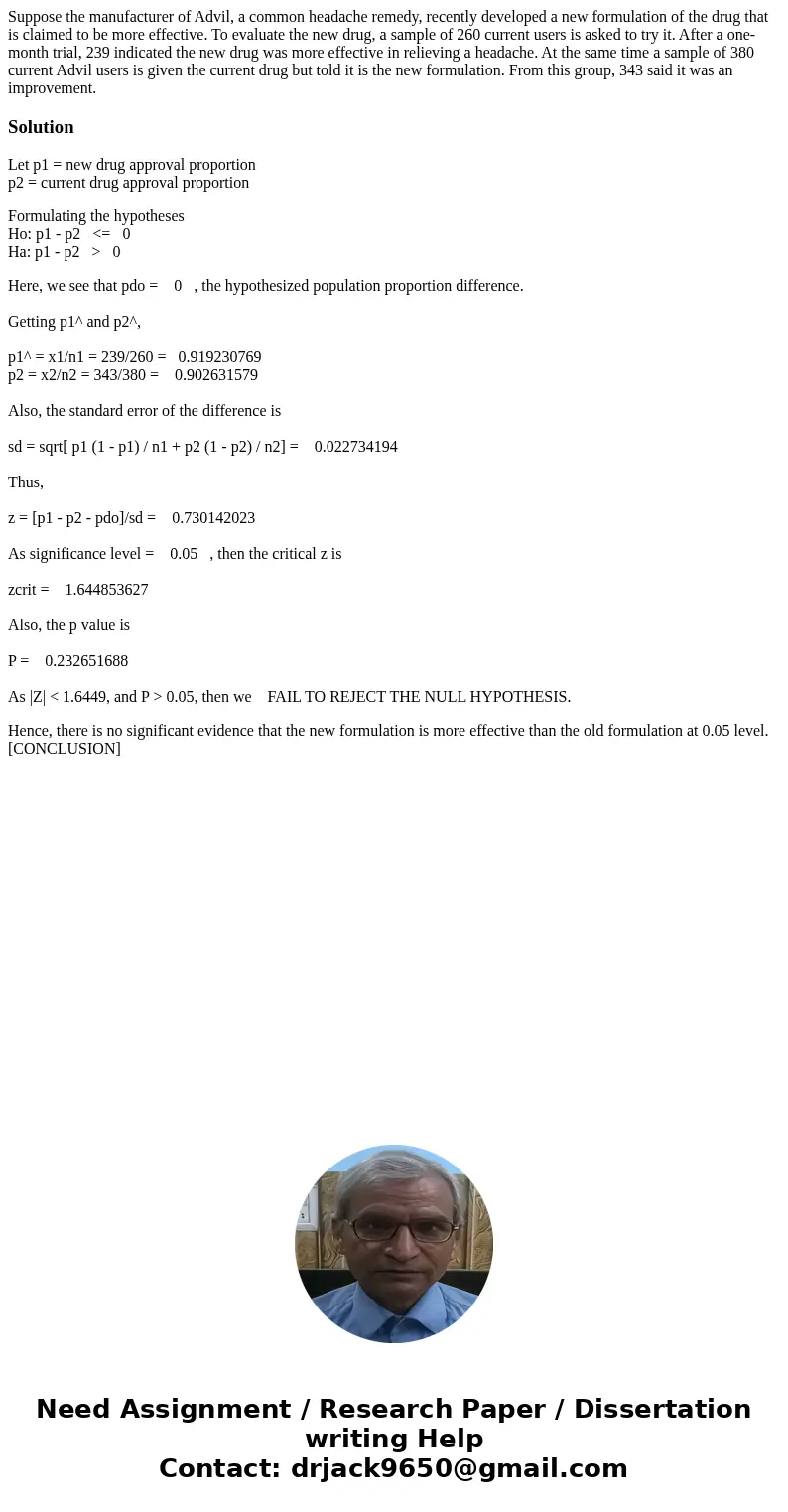Suppose the manufacturer of Advil a common headache remedy r
Suppose the manufacturer of Advil, a common headache remedy, recently developed a new formulation of the drug that is claimed to be more effective. To evaluate the new drug, a sample of 260 current users is asked to try it. After a one-month trial, 239 indicated the new drug was more effective in relieving a headache. At the same time a sample of 380 current Advil users is given the current drug but told it is the new formulation. From this group, 343 said it was an improvement.
Solution
Let p1 = new drug approval proportion
p2 = current drug approval proportion
Formulating the hypotheses
Ho: p1 - p2 <= 0
Ha: p1 - p2 > 0
Here, we see that pdo = 0 , the hypothesized population proportion difference.
Getting p1^ and p2^,
p1^ = x1/n1 = 239/260 = 0.919230769
p2 = x2/n2 = 343/380 = 0.902631579
Also, the standard error of the difference is
sd = sqrt[ p1 (1 - p1) / n1 + p2 (1 - p2) / n2] = 0.022734194
Thus,
z = [p1 - p2 - pdo]/sd = 0.730142023
As significance level = 0.05 , then the critical z is
zcrit = 1.644853627
Also, the p value is
P = 0.232651688
As |Z| < 1.6449, and P > 0.05, then we FAIL TO REJECT THE NULL HYPOTHESIS.
Hence, there is no significant evidence that the new formulation is more effective than the old formulation at 0.05 level. [CONCLUSION]

 Homework Sourse
Homework Sourse